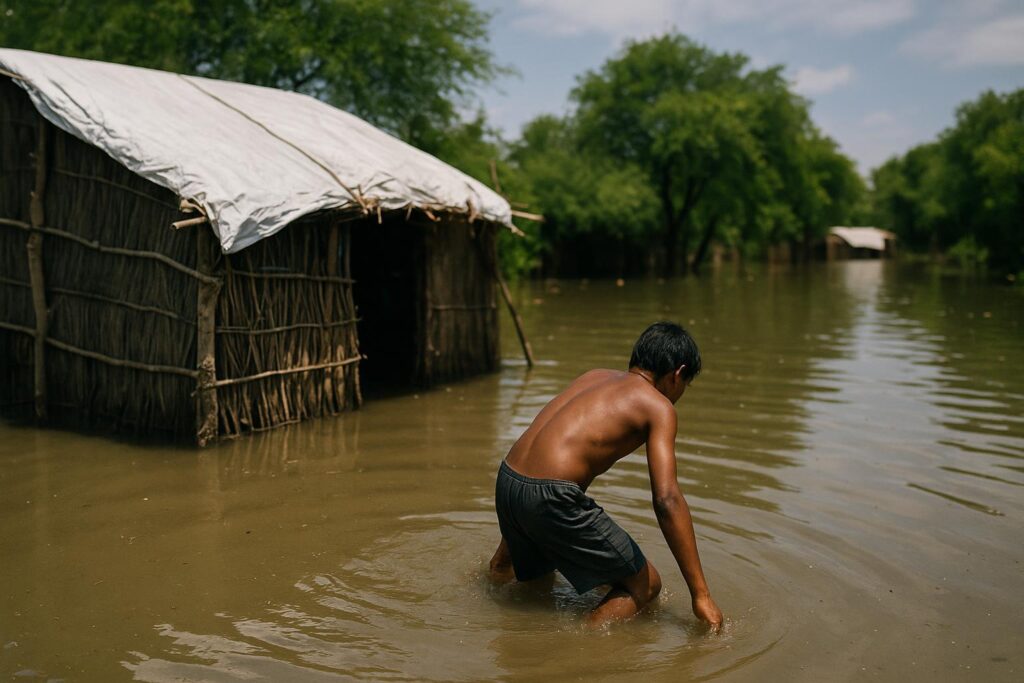Pibor Floods Intensify in South Sudan
Torrential downpours have pounded Pibor town for a week, pushing the overflow of the Gumuruk and Kengen rivers into streets and compounds.
Local authorities confirm 204 households affected, along with 47 shops, as ankle-deep water snakes through the administrative heart of Greater Pibor Administrative Area.
Economic Lifeline Disrupted
The once vibrant central market now operates only in scattered dry corners, with traders abandoning submerged stalls and salvaging stock by canoe or wheelbarrow.
“Forty-seven shops are not operational because they’re under water,” information minister Jacob Werchum Jouk stated, noting dwindling supplies and rising prices.
Human Stories of Loss and Resilience
“Our livelihoods are destroyed; we appeal for food aid and shelter,” explained food vendor Mary Korok, her kiosk now a pool of brown water.
Displaced families crowd higher ground, constructing makeshift tents from tarpaulin and zinc sheets while keeping watch over floating household goods.
Relief Efforts and Official Response
Joseph Nyao, who heads the Relief and Rehabilitation Commission, warns the crisis could escalate if rainfall persists for another week.
Local government boats patrol flooded zones, ferrying the elderly to clinics, while humanitarian partners assess immediate needs for food, blankets and water-purification tablets.
Climate Patterns and Regional Outlook
Seasonal flooding has grown harsher across South Sudan over recent years, a trend meteorologists link to shifting rainfall bands along the Upper Nile basin.
Analysts caution that infrastructure gaps, such as limited drainage and weak river embankments, compound the natural hazard and threaten to prolong displacement.
Looking Ahead
Officials urge residents to move to higher ground temporarily and call on national agencies for emergency supplies, stressing that evacuation is voluntary.
With skies still brooding, Pibor watches the waterline; each drop of rain now carries both risk and the resolve to rebuild.


